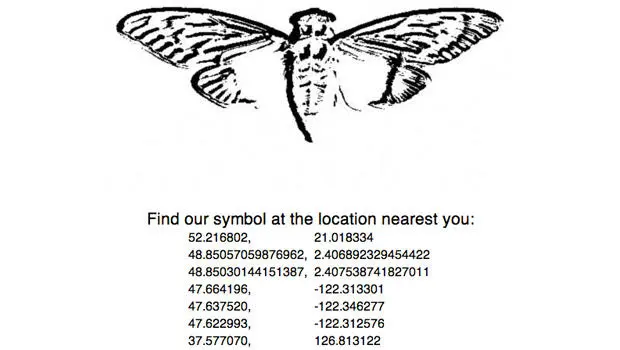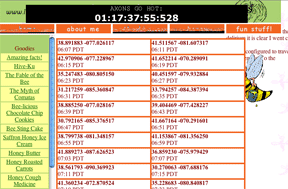The ARGs Dilemma: Cicada 3301 & I Love Bees

Have you ever visited a random website, only to find yourself amidst cryptic messages and hidden clues? Have you ever noticed your favorite Youtuber suddenly hinting at being stalked or being forced to film? These might be the signs that you have stumbled upon the intricate world of ARGs (Alternate Reality Game).
What is ARG?
ARG is a type of interactive storytelling that uses the real world as a platform to deliver fictional storyline. In most cases, ARGs could be used in gaming communities or by Youtubers who tricked their audiences into believing their fictional story to attract more attention. If you have ever heard of the case of Kate Yup, a Youtube food blogger known for videos of herself eating and viewers started to see her giving hidden signs of being forced to film, there has been some conspiracy that Kate Yup might be an example of an ARG. While ARGs undoubtedly attract attention, the true purpose for some of them remains an ongoing debate. Some ARGs are meticulously crafted without a clear motive, neither for profit nor marketing for any businesses. However, regardless of the purpose, almost all ARGs have the same effect: to delve into people’s emotions and thoughts, triggering either negative or positive reactions.
Two of the most common examples of ARGs are “Cicada 3301” and “I love Bees”, which interestingly have simulated vastly different yet equally captivating experiences.
Cicada 3301: The Unsolved Enigma
Cicada 3301 first emerged in January 2012, known for its online series of complex cryptographic puzzles. Starting with “Hello. We are looking for highly intelligent individuals”, it was very clear what Cicada 3301 was looking for. However, its origins and purpose remain a mystery until this day as the creators behind it have been remaining anonymous.

Part of what makes Cicada 3301 a global internet mystery was the complexity it possessed, with its clues hidden in various digital mediums, including images, text, and audio files, and even real-world locations.

There have only been two winners, who were then sent an invitation to join Cicada 3301. However, around May 2013, all communication with Cicada ceased and its website was taken down mysteriously, leaving it a timeless mystery to both winners and the rest of the world.
“Welcome to I Love Bees!”
Following this welcoming introduction, the audience immerses into the universe of the video game "Halo 2", as “I Love Bees” was a marketing campaign for the video game "Halo 2". It first looked like a site about beekeeping until it appeared to be "hacked". A series of puzzles and audio logs was displayed, which gradually revealed a fictional storyline about Melissa, a damaged AI character who was stranded on Earth and was seeking help to repair itself.

This ARG was created by 42 Entertainment in 2004 and it was made clear that it was a campaign for the release of a video game. Similar to Cicada 3301, “I Love Bees” also involves various real-world missions, where players were given specific GPS coordinates to receive clues through payphones.

The ARG was a big success, attracting thousands of players and even won numerous awards, including an IGDA Innovation Award and a Webby Award in 2005.
Analysis: How different were their impacts?
. Level of Solitary .
One of the distinguishing contrast between both ARGs is the differences in the level of solitary. The design of the puzzles does not inherently require collaboration, and even against it. Throughout the ARG, there were multiple times where it would mention “individuals”, implying a sense of isolated intrigue. For the end of the first puzzle where QR codes were spreaded out in certain locations around the world, the QR codes led players to an image which then led to a riddle, then a riddle to a book, then a book to a website.
However, only a small group consisting of those who reached the website first can continue to the next stage. The site was then closed down, with the following message: “We want the best, not the followers.”
On the other hand, "I Love Bees" thrives on collaboration. The ARG was designed for players to collaborate and together work on puzzles. Racing through 45 seconds snippets over payphones all over the United States, players were required to piece together more than 5 hours of radio drama. This collaborative aspect fosters a sense of community and thus, creating a more welcoming and inclusive atmosphere.
. Timing .
Cicada 3301 consisted of 3 main puzzles, each being released intermittently. The first puzzle emerged in January 2012, and the second puzzle was posted exactly 1 year and 1 day after the release of the first one. At the beginning of 2014, the third one started. While the reason behind this timing was unsure, what is sure was that it left the players in a state of anticipation and speculation between these long pauses, amplifying the overall sense of intrigue.
The 12 chapters of “I Love Bees” were carefully distributed across payphones around the United States, keeping participants constantly engaged and connected to the unfolding narrative. This also fostered a sense of ongoing adventure and security of the game, as the participants were clear of the purpose of the ARG and there was no time where they had to doubt it.
. Unsettling Nature .
If there is one word to describe Cicada 3301, it would be “unsettling”. No origins, no purposes, no intentions, no outcomes, they all led to endless speculation. The tone and language used in the clues and puzzles were almost monotone, serious, and unwelcoming. Furthermore, there were parts of the game where players were tricked, creating an atmosphere of unease that keeps players hooked through curiosity.

“I Love Bees” with a more welcoming language, informal but friendly, encourages a broad range of audiences to participate rather than seeking for a small group of “intellectual individuals”. Each piece of clue was crafted for the best experience for players, leading them further into the narrative and fostering a sense of progression towards an outcome.
Conclusion,
For various aspects, the primary purpose of Cicada 3301 seems to be to challenge and intrigue, while “I Love Bees” was genuinely for entertainment and marketing for a business. There was undoubtedly a significant contrast between the tone of both ARG: one was unsettling and unknown, while the other one was more positive and community-based. To fairly assess both ARGs, Cicada 3301 seems to have had more impacts globally, making it the first to mention when talking about ARGs. However, both Cicada 3301 and “I Love Bees” have made significant impacts in their own ways, showing the diverse potential of ARGs in evoking a range of emotions, attention, and experiences.